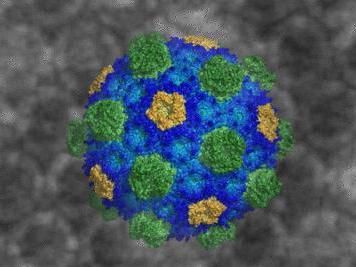How bacteria sense the world
Researchers at the RIKEN SPring-8 Center have addressed how environmental stimuli are converted into biological signals using the highest resolution analysis of its kind to date. Their findings reveal that interaction between a particular kinase sensor and catalytic domains act as an on/off “switch” that triggers phosphorylation in response to environmental stimuli. While advancing our understanding of environmental response in bacteria, the current findings could also accelerate the development of products such as antibacterial agents and plant growth regulators.
Transduction of signals from the environment is an essential process enabling cells to respond to external stimuli. In many organisms this happens via a process known as the two component system (TCS); a stimulus-response mechanism centred on the interaction of a sensor protein – in this case histidine kinase (HD) – and a response regulator (RR).
In a paper to be published in Structure, the team present an X-ray crystal structure analysis to study this interaction within the bacterium Thermotoga maritima - of interest because of its ability to metabolise carbohydrates such as cellulose and xylan that can be converted to hydrogen.
Analyzing the HK/RR interaction site in detail, they show an interdomain β-sheet between the sensor domain and catalytic domain of histidine kinase (HK), providing crucial clues about the enzyme’s folding structure. They also determined that two molecules of histidine kinase form a dimer, which bonds to two response regulator molecules. Overall, the findings reveal that interaction between HK sensor and catalytic domains act as an on/off “switch” in the TCS, triggering phosphorylation in response to environmental stimuli.
Organizations
Other news from the department science
These products might interest you

Kjel- / Dist Line by Büchi
Kjel- and Dist Line - steam distillation and Kjeldahl applications
Maximum accuracy and performance for your steam distillation and Kjeldahl applications

AZURA Purifier + LH 2.1 by KNAUER
Preparative Liquid Chromatography - New platform for more throughput
Save time and improve reproducibility during purification

Get the analytics and lab tech industry in your inbox
From now on, don't miss a thing: Our newsletter for analytics and lab technology brings you up to date every Tuesday. The latest industry news, product highlights and innovations - compact and easy to understand in your inbox. Researched by us so you don't have to.



![[Fe]-hydrogenase catalysis visualized using para-hydrogen-enhanced nuclear magnetic resonance spectroscopy](https://img.chemie.de/Portal/News/675fd46b9b54f_sBuG8s4sS.png?tr=w-712,h-534,cm-extract,x-0,y-16:n-xl)





















































